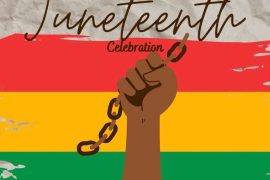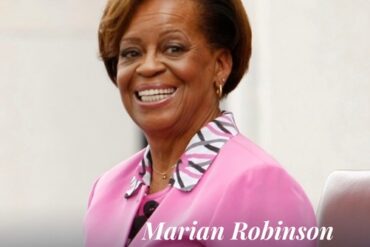One day Julieanna Richardson, who created the HistoryMakers, called me and asked what was I doing with my almost 30 years worth of N’DIGO newspapers. I was stumped; I had no answer, as I was working away on our digital platform.
She talked about preserving our history and that our papers – meaning African-Americans papers – were not being preserved. She was right and I began to think and do research on the particulars of how to get that done. What do you do with the work and the stuff you have acquired through the years as you had a business or a career?
Shortly thereafter, I received a call from Mrs. Beverly Cook, the archivist at Carter Woodson Library, formally requesting N’DIGO’s papers. We had a lengthy conversation on preserving history, representing history, and its importance.

I had a million questions on the particulars and exactly what they wanted. Mrs. Cook said the library wanted more than just the N’DIGO published newspapers. She wanted my writings, letters, and the like from our work, including our 20 N’DIGO Galas. That piqued my interest and made me think long and hard.
Mrs. Cook told me that the library houses the Vivian Harsh Research Collection, the largest repository of documents, original paperwork, and literature related to the African-American experience in the Midwest.
The papers of N’DIGO will be donated to Carter Woodson Library for obvious reasons, but also to the Chicago History Museum, because we have very much been a part of the Chicago fabric.
I paid a visit to Woodson Library to see what such preservation would look like. They showed me historian and author Timuel Black’s work. Papers, pictures were cataloged with dates, names and places. Very well done and years from now, if a writer, researcher, scholar comes to understand a period of history, a climate, a social change, a person, it is here for their perusal. I was impressed.
Then I thought how on earth would I find time to pull off gathering all this stuff. Quite a job it is. I honestly didn’t know where to start. The discussion alone started two years ago.
But then I saw the closing of Johnson Publishing, which published Ebony and Jet magazines, and their photo archives go to auction. The writings and pictures represented 70 years of work.
Then the Chicago Defender stopped publishing and went completely digital. That represents 114 years of real history that was sometimes only recorded on those pages with an African-American perspective.
So I got busy. As you preserve your own work, as you curate your own stuff, you are reminded that it is not for you; it is for those who follow when you are not around. You are preserving your history, your work, for future generations. Its an awesome task as you engage backward and forward thinking of what’s important.
The N’DIGO Collection
I created a schedule. On Thursday afternoons for at least four hours, I would work on gathering material. I just grabbed a box of papers from our archives. I asked two of my girlfriends to come help. Zemrah and Sasha Dalton and Shannon Peoples came to the rescue. Shannon came every Thursday afternoon and has pulled papers along with me – one for digital and one for the library.

I developed a system and made the effort part of my workweek. Phase one of this project has just completed. The print editions of N’DIGO have been shared with a newspaper company that digitizes.
The papers will be known as The N’DIGO Collection and will eventually be available on our website by story name, bylines, and publication dates. Their work is underway and we hope to have it completed by year’s end.

This has been a painful, tedious and emotional process for a lot of reasons. In pulling the papers you really do see a window of history from 1989 when we began until 2018 when we stopped printing papers. In 2019, we are completely digital.

Many of the people we covered in those 30 years have died; some issues I forgot we did; and many of the businesses we profiled have dissolved. I was by myself reflecting, looking backwards, and staring history in the face.
Recording history is one thing, making history is quite another. You don’t always see it coming. I saw Barack Obama. As others discussed the young Illinois state senator as mayor or governor, I saw his national presence.
You don’t realize what you are recording as you publish, because it is just contemporary news at the time, but it is news that becomes history. Truly, newspapers are the first blushes of history.
I have assisted a few authors, historians, and documentarians doing research on Obama in his early years, Rev. Jesse Jackson from the civil rights days, and our stories.


Educator and N’DIGO political columnist Bob Starks and I were interviewed by a Hong Kong reporter about Obama. Her interview aired as part of a special on Asian television and she came back to share with Bob and I that she won an Emmy-like award over there. We got to view our interview in Mandarin. Amazing.
In our print years, N’DIGO published the first story on Barack Obama, the one to become President, and we wrote what became the final story on Mrs. Mamie Till Mobley, Emmitt Till’s mother.

She called us one day to say she wanted us to interview her because she wanted to tell us how she wanted her son recorded in history, what his life and his death meant.
We had the last interview with John Sengstacke, the publisher of the Defender. We had a rare interview with John Johnson of Johnson Publishing. We have several stories on Rev. Jesse Jackson’s progress as he brought change to America.


We have covered the campaigns of many politicians, including Mayor Richard Daley, Governor Rod Blagojevich, Governor Bruce Rauner, Mayor Rahm Emanuel, Congressmen Jesse Jackson Jr., Bobby Rush and Danny Davis, and obviously a host of others as we printed almost 1,100 issues of N’DIGO.
An Historic Publication
We have been able to predict political winners with keen insight after interviews. We covered preachers and teachers that mainstream media totally ignored. We wrote about the quiet Black cultural movement that Dr. Margaret Burroughs, truly a renaissance woman, started. She started us preserving our history via DuSable Museum, the first of its kind in America.

Our cover story profiles were feature stories that general media forgot or disregarded as important. We covered the entertainers, the police chiefs, the authors, the stars and the movies.
As I reflect, I am grateful. I set out with the inception of N’DIGO to bring Chicago’s vibrant Black middle-class community to life, to showcase people missing from mainstream news, to provide insight and perspective on people and topics absent from Black and white media. For us it was not about the press release or the event. We went further. Mission accomplished. I wanted to change the narrative and to be included in the conversation.
David Smallwood has been my muse and editor all the while. I often say that N’DIGO is our creative child. I gave people an opportunity to write columns that would not have happened otherwise.

Derrick Baker was a hit with his Black male urban perspective in his column, “The Way I See It.” He was a favored read of Quincy Jones. Wanda Wright wrote a gossip column that was the bomb with exclusives and zingers. Bob Starks was quite the political writer.
Barbara Samuels wrote about fashion like no other. She was amazing and unwavering in her coverage. Barbara attended fashion shows world wide with a front row seat. Kai El’ Zabar was our first editor and brought an abundance of creativity to the table. Zondra Hughes, Jenice Drake, and Monroe Anderson were also editors and each brought their very own uniqueness.


We didn’t always agree, but we were always interesting and sometimes clashed. I made hard, but fair, decisions. Many of the cover story writers had a chance to stretch their writing expertise, including many who will remain nameless as they wrote for mainstream media and didn’t always have the opportunity to write the real story or the Black story. They wrote for us with assumed names, often.
And then there were photographers that we developed with portrait type character photography that graced our covers. I was always on the watch for new photographers and creativity, in layout, design and graphic art, as well. I invited them all.
I studied other print newspapers at every opportunity and spoke with every publisher in Chicago for counsel and just to compare notes. The Chicago Sun-Times and the Chicago Tribune aided our growth and development. They were angels.
When we saw digital coming, many didn’t pay attention; most of us didn’t know what to do with this gigantic cultural change. I saw it coming and moved as quick as I could to get into it, which is where we are now.
And Now, The New Age
N’DIGO became our paper, our community, our places, people and things. Our point of view. We hit the issues hard and we always told the truth. We gave voice. We spoke about our politics. We addressed racism, like it or not. We have been authentic.
We also made some breakthroughs in marketing. We were innovative with liquor and cigarettes and retail, fast foods, groceries, and health advertising as we told and taught what great consumers Black Chicagoans are. I hated how advertisers marginalized the Black consumer and took us for granted with advertising ignorance.
We broke through to the entertainment community, often telling them to stop just providing Black History Month stuff. Some of them eventually got it. We like theatre and ballet, too! We developed audiences.

I began writing the “Publisher’s Page” by accident, as I wanted us to take a hard look at issues affecting the Black community. I wrote it because no one else would. I was modeling Mike Royko, Lu Palmer and Vernon Jarrett.
N’DIGO did not marginalize Blackness – it was our beat, and we covered it in its many phases, stages and ages, with no apology. We did not write for a demographic; we wrote for a people. We were bridge builders.
Every year we did a special issue on Dr. Martin Luther King, Jr. around his birthday, to give perspective about what his life and activity meant. Our goal was always “Keep King Alive”. Let us at all ages remember his great work and his life.

As I reflect on this history and prepare to hand it off to others to preserve, I cry. I cry because I saw a business come into being and then drastically change in the printed form due to technology.

N’DIGO lives on the internet now and is in the process of developing new platforms to bring the message forward. But there is nothing like holding a newspaper in your hand.

It astounds me when I walk into someone’s office or home to this day and still see a framed, mounted N’DIGO on the wall of a cover story we did on that person. It always makes me smile. And I cry when I get the calls asking to use the picture or story for an obituary. I am proud that teachers were able to use N’DIGO in classrooms for English, civics, and current event discussions.
I am thankful and proud that we made a difference, that we told stories untold, mistold, and that needed to be retold. I am glad that we were a viable business, a news organization, and that we trained many and gave many an opportunity to start and grow.

I am glad that as challenging as this process of preservation was, that I am able to put N’DIGO the paper to bed. It is important to preserve our history and it is important to do it as you see fit.
N’DIGO began in December 1989 with “The Little Warrior”, Rev. Willie Barrow as our first cover story. Now we move on to the next phase. Well done. Bravo to N’DIGO! And follow us, please, at http://ibi.jjg.mybluehost.me.








Thank you for this look back, but more importantly your role in uplifting the history of our people. I am proud of you and N’digo for keeping a deep rooted ancestry breathing…
Thanks for those sentiments, Lorenzo.